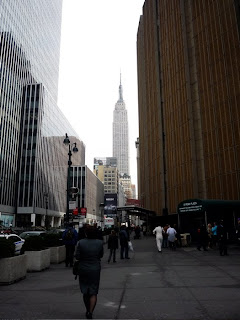Absinthe: Its Many Uses in Medieval Times
 Unfortunately I have never witnessed a vision. Not one of the 12,000 saints has ever said so much as 'Good day' to me, but since I was first at Lourdes ten years ago I have realized that the phenomenon of visions is something that concerns us all. " - Erich Von Däniken, Miracles of the Gods, 1974*
Unfortunately I have never witnessed a vision. Not one of the 12,000 saints has ever said so much as 'Good day' to me, but since I was first at Lourdes ten years ago I have realized that the phenomenon of visions is something that concerns us all. " - Erich Von Däniken, Miracles of the Gods, 1974*I'll wrap up the visit to The Cloisters with a few observations, because I plan to return to Chelsea today to better contrast medieval and contemporary art. In the near future I'll put all the related Cloisters stories together and post an official walk on the sidebar where it belongs.
When visiting a museum I recommend picking just three or four rooms and then spending quality time with a handful of objects. This focused visit yields more powerful results than the superficial overview. While visiting The Cloisters, for example, I decided I would only care about the Ermengols, the herb garden, and the dogs in the Unicorn Tapestries and then come back for more later.
While the weather is still mild I recommend a visit to the famous gardens of the Cloisters. I zeroed in on the wormwood plant (artemisia absinthium), so happy to find that this favorite of the flâneur played such an important role in medieval life, too. Monks put wormwood in their ink to protect manuscripts from bookworms, nursing women rubbed the herb on their breasts to encourage weaning, and pilgrims stuffed a bit in their pockets to ward off fatigue.
In William Shakespeare's A Midsummer Night's Dream, Oberon squeezes "Dian's bud o'er Cupid's flower" (most likely artemisia absinthium) to bring Titania back to her fairy senses.
Oysters Rockeffer is made with absinthe. We're forging a unified field theory, yes?
What Really Happened at The Cloisters, a tale in the same genre as I Choose Flâneuse, will be available on this website later this fall.
*If you would like to communicate with M. Däniken, please find his website, picture, his tastes in wine and food, and email here.





Comments
Post a Comment